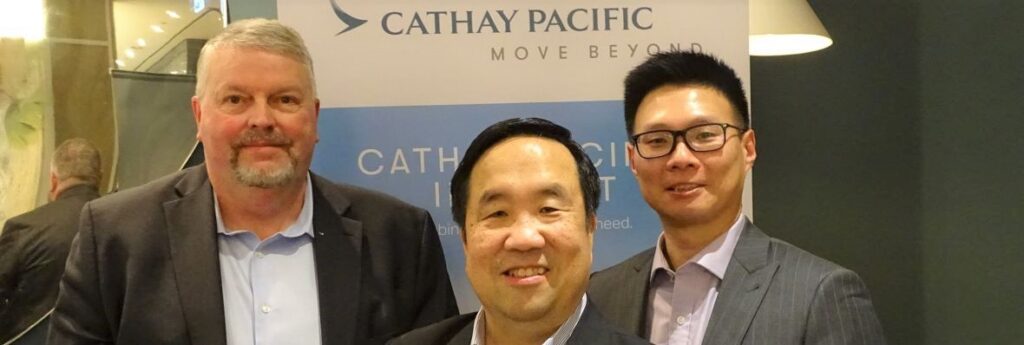As Michael Lim was telling a small trade audience in Toronto early this week that Hong Kong was getting closer to restriction-free travel every day, the city’s government suddenly announced the end of all restrictions on arrivals to the city, effectively ending the city’s oft-criticized “0+3” pandemic protocols starting today (Wednesday).
The relaxed restrictions mean arrivals who test negative will not have to quarantine in hotel rooms and will not be subjected to the amber health code that previously prevented them from roaming the city freely, including entering restaurants and other venues, though proof of vaccination (three jabs) may be required (including photo or paper record). And those who do test positive will no longer be required to wear an electronic wristband.
Other changes will include the elimination of PCR testing to enter Macau and mainland China.
The changes followed the easing of COVID-19 restrictions in China, which has adhered to a “zero-COVID” policy, last week, and further news on Monday that authorities would stop tracking some travel, potentially reducing the likelihood people will be forced into quarantine for visiting COVID-19 hot spots.
On Monday, Lim, the Hong Kong tourist board’s Canadian director, told his VIP trade audience – invited for high tea at Holt’s Café at the Yorkdale mall – the best way to keep up with the city’s latest COVID news and protocols is to visit DiscoverHongKong.com
.
In the meantime, Lim says is ready for the full return of visitors, the city having not been idle during the pandemic, despite its rigid restrictions. “There’s a lot of things going on, a lot of new development,” he says. “There’s lots of excitement.”
That includes new attractions, hotels, and restaurants, with more of the latter opening during the past three years than have closed, he says. Indeed, there are more than 17,000 venues across the territory serving both new and traditional cuisine, and many boasting the monikers of celebrity chefs. And he adds, “bistros are coming back” across the city’s 18 distinct neighbourhoods.
Meanwhile, development, particularly on both sides of the harbourfront and in West Kowloon will present a new skyline to return visitors, and many cultural attractions have been refurbished during tourism’s time off.
Noting that 70% of Hong Kong is in fact rural, Lim says visitors will also find plenty of open spaces for activities in the “city oasis,” sometimes terrific, unexpected hiking opportunities.
For its part, Cathay Pacific is slowly getting back in the saddle as tourism to Hong Kong and Asia continues to slowly open up.
Marius Carstensen, head of trade sales, North America, flew in from Boston for the event, and admitted that the Hong Kong-based airline is only operating at 30% capacity, but he added, “We have a plan.”
That includes reaching 40% by February, 50% by summer, and 70% by the end of 2023.
He says the airline expects to pre-pandemic levels by 2024 and in growth mode by 2025, coinciding with the planned opening of a third runway at Hong Kong airport.
Cathay’s “aggressive” plan also includes new aircraft coming on stream and the introduction of a new first-class product, and will also feature new destinations and more route frequencies.
In the short term, Cathay continues to serve Hong Kong from Toronto and Vancouver, the latter offering daily flights, the former near-daily through the winter.
Overall, there will be 36 to 45 flights per week throughout the winter from North America, including US gateways (JFK, Boston, San Francisco, and LA).
“Thank you,” Carstensen concluded to the travel agents and tour operators. “You have stuck with us during the challenging times of the pandemic. I know it’s been hard working with airlines, but we’re here to work with you and grow with you.”

